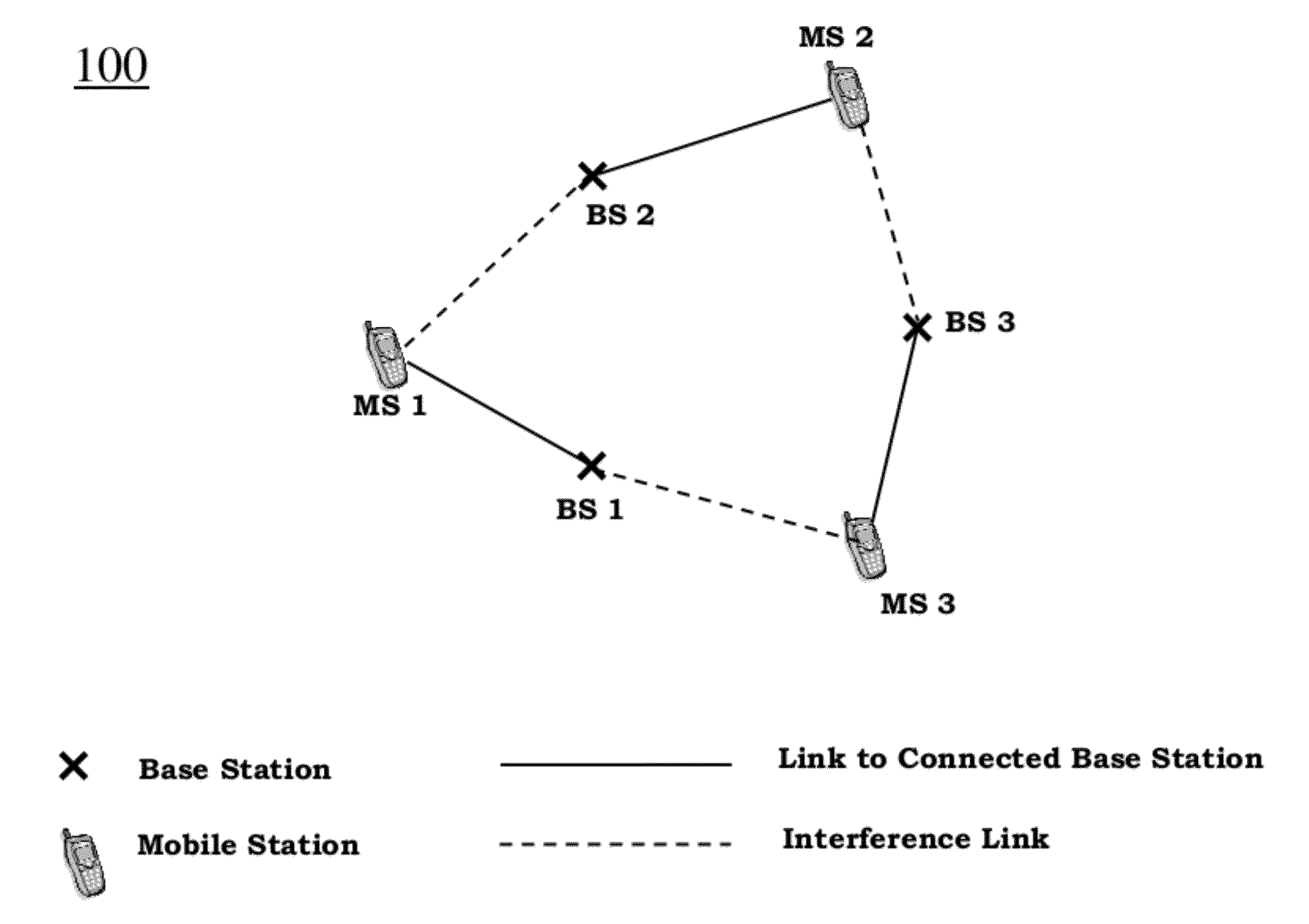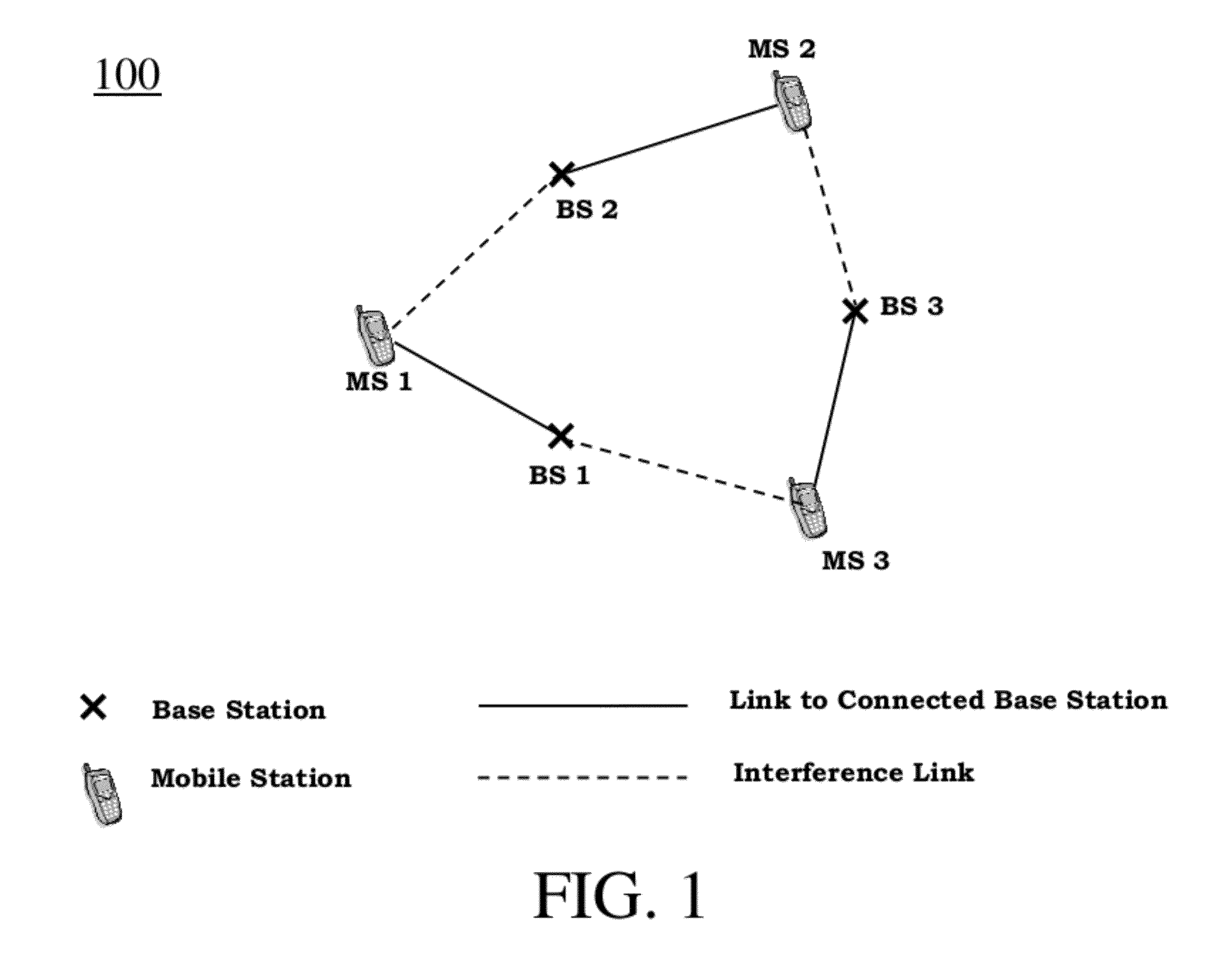Receive Signal Processing In Wireless Networks
a wireless network and reception signal technology, applied in the field of communication, can solve the problems of large interference at the receiver of the base station, receivers cannot employ local procedures to cancel the interference caused by the mobile device, and uplink transmissions in cellular networks comprising multiple base stations are often affected by excessive interferen
- Summary
- Abstract
- Description
- Claims
- Application Information
AI Technical Summary
Benefits of technology
Problems solved by technology
Method used
Image
Examples
Embodiment Construction
[0018]To provide a greater degree of detail in making and using various aspects of the present invention, a description of our approach to improving the performance of interference-limited networks and a description of certain, quite specific, embodiments follows for the sake of example. FIGS. 1-7 are referenced in an attempt to illustrate some examples of specific embodiments of the present invention and / or how some specific embodiments may operate / perform.
[0019]Among the various methods proposed to address this problem, two promising ones are: 1) Network Multi-Input-Multi-Output (often referred to as Network MIMO) decoding (which employs joint MIMO receiver processing of signals received at multiple base stations); and 2) Multi-Cell Successive Interference Cancellation (MC-SIC). While both of these methods hold the promise of substantially improving the performance of interference-limited cellular networks, they have complementary strengths and limitations when implemented in a pr...
PUM
 Login to View More
Login to View More Abstract
Description
Claims
Application Information
 Login to View More
Login to View More - R&D
- Intellectual Property
- Life Sciences
- Materials
- Tech Scout
- Unparalleled Data Quality
- Higher Quality Content
- 60% Fewer Hallucinations
Browse by: Latest US Patents, China's latest patents, Technical Efficacy Thesaurus, Application Domain, Technology Topic, Popular Technical Reports.
© 2025 PatSnap. All rights reserved.Legal|Privacy policy|Modern Slavery Act Transparency Statement|Sitemap|About US| Contact US: help@patsnap.com



